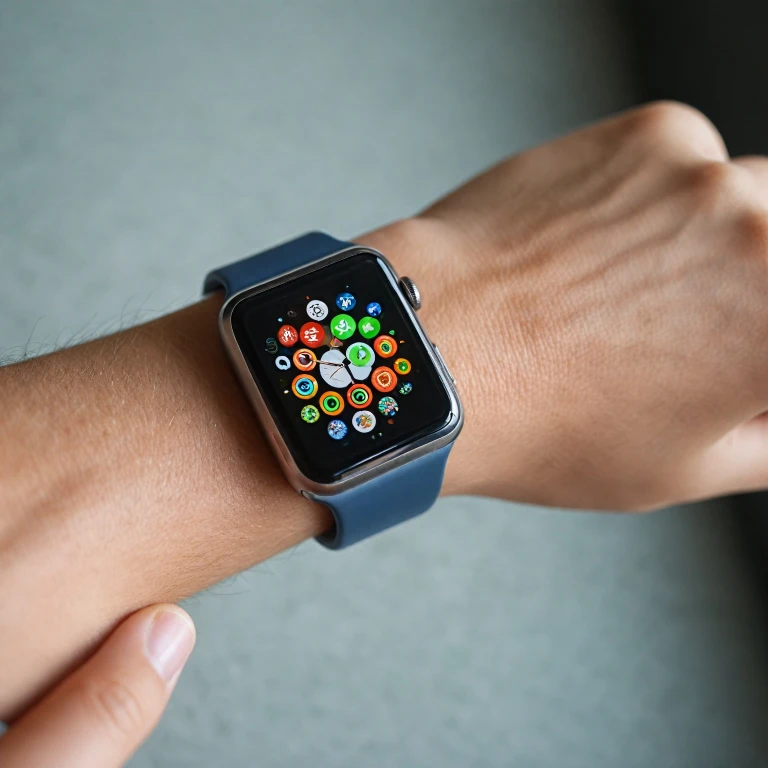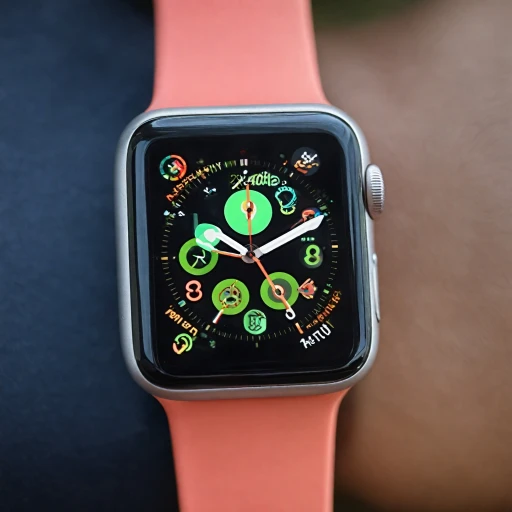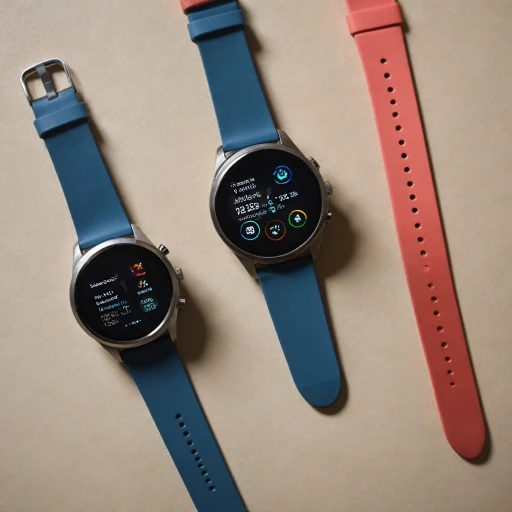Understanding the Apple Watch Interface
Navigating and Understanding Your Apple Watch Interface
The Apple Watch is a powerful device, offering a plethora of apps at your fingertips, or rather, at your wrist. Understanding the interface is crucial for efficiently managing and closing apps on your watch, which can significantly enhance battery life and device performance. Let's delve into how this compact gadget operates to support and elevate your digital experience.
The home screen, often referred to as the "watch face," is your starting point. From here, you can press the Digital Crown to access the App Grid or List View, depending on your preference. The Digital Crown is the rotating button on the side of the watch, which allows you to navigate through apps and screens effortlessly.
Navigating through the Apple Watch interface involves utilizing two main buttons: the Digital Crown and the Side Button. The Side Button, located below the Digital Crown, opens the app switcher with a press, allowing you to see all open apps. By swiping left on an app within this view, you can initiate a close, which helps with app management and maintaining an efficient watch operation.
For versions of watchOS earlier than the latest, the process may differ slightly, but understanding these basic elements remains vital. With the right know-how, you'll be able to manage apps seamlessly, preventing them from playing havoc with battery life or overwhelming your watch's capabilities.
As we continue, you'll learn about the importance of closing apps and how to execute this action precisely—ensuring your Apple Watch is always at its best.
Why Closing Apps Matters
Importance of Closing Apps on Your Apple Watch
Efficient app management on your Apple Watch directly impacts the device’s performance and battery life. When apps run continuously in the background, they consume power and resources, potentially leading to a faster depletion of battery life and sluggish performance. While watchOS is designed to support multitasking, it's essential to understand when and why you should close apps effectively.
- Enhancing Performance: Keeping multiple apps open can fill the available memory of your Apple Watch, affecting how smoothly and quickly your device operates. Knowing how to navigate and close apps ensures your watch continues to run efficiently.
- Troubleshooting App Issues: Sometimes, an app might freeze or behave unexpectedly. In such cases, closing and reopening the app often resolves the issue, ensuring that your Apple Watch functions optimally.
- Battery Conservation: Managing which apps remain active and which ones are closed can have a significant impact on battery life. While your Apple Watch is smart enough to pause apps that aren't in active use, closing certain apps can further optimize battery performance for longer use throughout the day.
By understanding the importance of closing apps, you prepare yourself to navigate the steps required to do so proficiently. You also decrease the likelihood of running into the common mistakes discussed later, ensuring a smooth experience with your Apple Watch. Additionally, effective app management showcases how integrating this practice can maximize the battery life benefits of your device.
Step-by-Step Guide to Closing Apps
A Simple Approach to Closing Apps on Your Apple Watch
Managing your apps efficiently on your Apple Watch can be a game-changer in terms of performance and battery life. Here's how to seamlessly close apps you no longer need open:
- Accessing Open Apps
First, identify which apps you have running. To do this, press the side button on your Apple Watch. This action will bring up the App Switcher, showing you all open apps in a neat carousel form.
- Navigating the App Switcher
Once in the App Switcher, use the digital crown or swipe left and right on the screen to navigate through your apps. WatchOS makes it simple to see which apps are running at a glance.
- Closing the App
To close an app, simply swipe the app you want to close to the left, then tap the red "X" or "Close" icon that appears. This action ensures the app is no longer running in the background, freeing up your device’s resources.
- Force Closing Apps
If an app becomes unresponsive, you can force close it. To do this, press and hold the side button until the "Power Off" screen appears, then release the button. Next, press and hold the digital crown until the app closes.
- Understanding App Closure Limitations
It's essential to know that not all apps require closing. WatchOS is designed to manage open apps efficiently, but if your battery is draining quickly or an app is malfunctioning, closing apps manually can help.
By understanding this process, not only do you contribute to improving your device's performance, but you're also making sure your battery life is optimized. For further app control techniques and maximizing battery efficiency, exploring advanced features and understanding the interface thoroughly can be beneficial.
Common Mistakes and Troubleshooting
Common Pitfalls and Fixing Them
Navigating through watchOS can be a seamless experience, but some hiccups may occur when trying to close apps on your Apple Watch. Understanding common errors and how to address them can enhance your experience.
- Overlooking the App Switcher: It's easy to underestimate the usefulness of the app switcher on your device. When you press the side button, it brings up a list of open apps. This tool is crucial for managing which apps are actively running and using battery. Misusing this may lead to unnecessarily high battery consumption.
- Missteps with the Digital Crown: Many users press the Digital Crown without holding it down, expecting it to close apps. However, to efficiently close an app, you must press and hold the side button until the app switcher appears, then swipe left on the app that you want to close. If this isn't done correctly, the app remains open, affecting both performance and battery.
- WatchOS Version Confusion: Errors often arise when users operate on watchOS versions without realizing differences in app management procedures between updates. It's essential to know the version of watchOS your watch is running. Apple regularly updates these features, and steps may vary between watchOS 6 and watchOS 9, for example.
- Force Closing Intuition: Some users mistakenly try to force close apps by repeatedly tapping the screen or misusing the side button. This habit rooted in iPhone usage doesn't translate well to the Apple Watch, where app management is different.
Incorporate these practices into your Apple Watch routine to minimize errors and support efficient use of device functionalities. This will not only preserve battery life but also help you maintain a seamless digital experience.
Maximizing Battery Life with App Management
Enhancing Battery Efficiency through App Management
Managing apps efficiently on your Apple Watch is crucial in ensuring your device runs smoothly while maximizing battery life. While it's necessary to utilize various features, the open apps on your device can consume significant battery power even when not actively in use. Therefore, understanding how to manage and close apps correctly is essential.
The process of closing apps on your Apple Watch can positively impact battery life by reducing the background activity of apps. By doing so, you allow the watch to conserve power for crucial tasks and functionalities. Here are some practical tips for maximizing battery life through app management:
- Regularly Close Unused Apps: Make it a habit to close apps that are not in use. This simple action reduces background activities, which can drain the battery over time. Use the App Switcher to view open apps and swipe left to close each app as needed.
- Avoid Force Closing Apps Unnecessarily: While using the force close method is sometimes vital for troubleshooting unresponsive apps, rely on it sparingly. Force closing can sometimes use more battery when reopening the app as it needs to reload completely.
- Manage Notifications: Select which apps are allowed to send notifications to your watch. Unnecessary alerts can light up the screen and trigger haptic feedback, resulting in additional battery usage.
- Update WatchOS: Ensure your device runs on the latest watchOS. Updates often include performance improvements and optimizations that can help with battery longevity.
- Explore Advanced Features: Some advanced features, such as background app refresh, can be disabled to further conserve battery. Review the settings to identify and adjust these features according to your preferences.
Utilizing these methods allows you to maintain your device's performance while conserving battery life. This not only extends your Apple Watch's usability throughout the day but also optimizes its operating efficiency.
Exploring Advanced Features for App Control
Dive into Enhanced App Control Features
Managing apps efficiently on your Apple Watch not only saves battery life but also ensures a seamless user experience. Leveraging advanced features of your Apple Watch, specifically in watchOS, provides even greater control over apps compared to just closing them. Here’s how to make the most of these capabilities:
- App Switcher Mastery: Use the App Switcher to quickly navigate through your open apps. Press the Side Button to reveal the App Switcher and swipe left to find the app you wish to manage.
- Customization with Watch Faces: Each watch face can support multiple complications, giving you swift access to your favorite apps without opening the app screen. A double-tap on the Digital Crown will fill the screen with your last-used app.
- Siri Shortcuts for Apps: With an iPhone, create Siri Shortcuts to enhance your interaction with apps. Basic actions like opening and closing apps can be performed hands-free, optimizing your user experience.
- Force Close Features: When an app becomes unresponsive, press and hold the Side Button until the shutdown screen appears, then release the Side Button and hold the Digital Crown until the home screen appears again. This force close method ensures the app is properly reset.
- Notifications Management: Manage app notifications quickly by swiping down on any watch screen. This also plays a crucial role in app performance and battery consumption.
- WatchOS Updates: Regularly updating your device ensures you are utilizing the latest tools provided by Apple to better handle app transitions and background activities.
The integration of these advanced features within your Apple Watch not only supports productive app management but also enhances overall device functionality, maintaining a balance between performance and convenience. Remember, thorough understanding and effective application of these tools, as guided in the previous sections, will significantly improve your watch experience.



